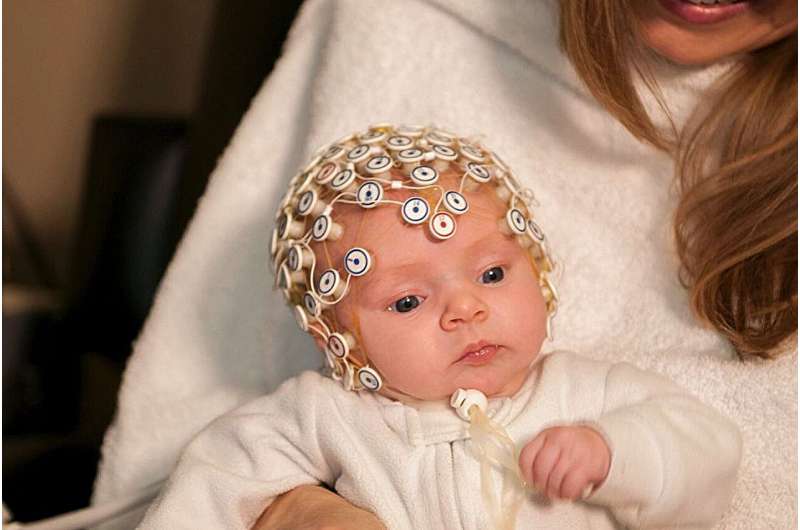This article has been reviewed according to Science X's editorial process and policies. Editors have highlighted the following attributes while ensuring the content's credibility:
fact-checked
trusted source
proofread
Cognitive performance at age four can be predicted in infancy

Using electroencephalogram (EEG) data collected before the age of 1, it is possible to predict which babies will have the highest adaptive behavior scores at the age of 4.
That's what Unversité de Montréal doctoral student of psychology Florence Deguire discovered in research conducted at the UdeM-affiliated CHU Sainte-Justine Research Center, supervised by professor Sarah Lippé.
Deguire recruited 120 mothers who agreed for their newborns to take part in a 48-month longitudinal study. She first tested the infants' ability to perform behavioral tasks, including posture, motor skills and language, at 6 months.
Then, each baby was fitted with a helmet equipped with EEG sensors.
"The babies watched a video in which a person said the same vowel for a while, occasionally interrupted by a different vowel, and we observed the babies' neurological response to the repetition and dissonance," Lippé explained.
There were three follow-ups, at 18 months, 24 months and 4 years. Data was collected from the parents through a questionnaire and from the children in the lab through tasks that measured their ability to think and make connections.
EEG readings taken while these tasks were performed were also compiled.
Deguire's results show that the neurological responses to repetition and dissonance in the first year of life are most predictive of cognitive and behavioral performance at age 4.
"We found that in infants under a year old, brain activity spikes when they detect a deviating vowel because they're so invested in the task," Lippé said. "However, the deviating stimulus elicits less activity at age 2, probably because their brains prefer greater complexity."
The EEG was therefore able to detect the sensitivity of brain dynamics that are biomarkers of future developmental trajectories.
Specific indicators of disorders
The research team also found that in babies with atypical brain development, "there's an alteration of the tasks and the electroencephalographic signal which are specific indicators of neurodevelopmental disorders that will occur later, although we can't predict their progression," said Lippé.
Deguire's thesis project is part of a wider cross-sectoral research program in Lippé's laboratory that is looking at both protective and interfering factors in children's neurodevelopment in order to guide treatment pathways and educational plans.
Lippé's research program on neurodevelopmental disorders such as intellectual disabilities and autism has identified brain signaling peculiarities in several genetic and idiopathic conditions and their links to cognitive and behavioral traits that significantly interfere with quality of life.
"My team is currently conducting a series of international clinical trials to investigate how these brain activity peculiarities can be improved with treatment," she said.
Deguire's work, for example, opens up the possibility of detecting neurodevelopmental abnormalities that are currently not diagnosed until age 4 or 5.
"Florence's results and our ongoing studies indicate that it is now possible to identify the alterations that can lead to sub-optimal trajectories," Lippé said. "This will enable us to carry out more precise interventions with at-risk children and intervene earlier in their lives."



















